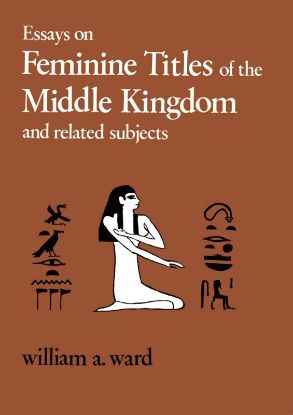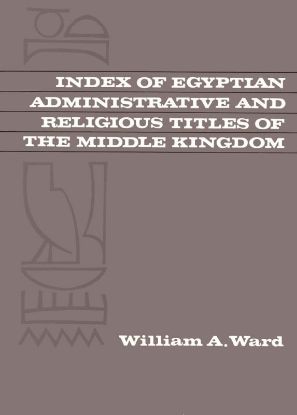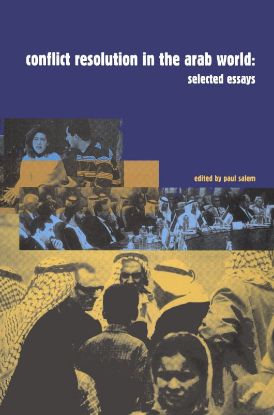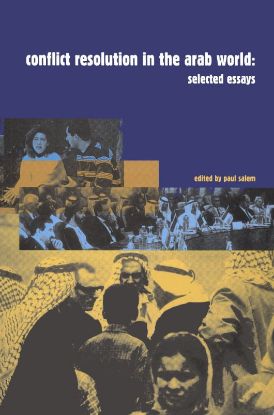Filter by price
AUB Press
Near Eastern Numismatics, Iconography, Epigraphy and History: Studies in Honor of George C. Miles
George Miles was the curator of Islamic coins for the American Numismatic Society (ANS) and later their chief curator and executive director. The essays in this volume, chosen to mark his retirement, concentrate on the subjects that occupied his scholarly research: numismatics, epigraphy, iconography, and the history of the Islamic, pre-Islamic, and Byzantine worlds.
$25.00
Essays on Feminine Titles of the Middle Kingdom and Related Subjects
There are essentially two themes to these essays. The first is an attempt to define the relative social status of women holding certain titles, and the second is to show that harems and concubines did not exist in the Middle Kingdom, at least as recognized institutions. The former theme is approached primarily through translations of official and religious titles held by women and their husbands, the latter theme by examining some key terms said to refer to harems and concubines. Further essays give new interpretations to the famous genealogy of Tomb 9 at El-Kab and the so-called “harem" of King Nebhepetre Mentuhotep.
$12.00
The Lebanon & Phoenicia
Ancient texts up to the coming of Islam are gathered in this volume, translated, many for the first time, from numerous ancient languages, and provided with a full annotation. The first four chapters cover texts of general interest as well as more specific references to geology, hydrography, and industries, while the final chapter is a complete collection of the texts, which describe the original afforestation of Lebanon and its destruction. Unfortunately, no subsequent volumes were published.
$10.00
Index of Egyptian Administrative and Religious Titles of the Middle Kingdom
The titles collected in this index belong primarily to the Middle Kingdom, from the reunification in the Eleventh Dynasty to the end of the Thirteenth. The book is in two parts, Part One being the index proper. Individual entries give the Egyptian spelling, transliteration, translation, and references to where each title appears and where it is discussed. Part Two is a glossary of the individual words used in titles with a discussion of their meanings and uses. The work is an invaluable guide to the researcher interested in the study of the social and political structure of the Middle Kingdom.
$12.00
Conflict Resolution in the Arab World: Selected Essays
This volume presents the study of conflict and conflict management in the Middle East through a variety of case studies. This is a collection of twenty papers prepared for a 1993 conference entitled “Conflict Resolution in the Arab World: Theory and Practice," organized by AUB and held in Larnaca, Cyprus. The essays cover the general subjects of conflict resolution in Islam, the sociological roots of conflict resolution in the Arab world, and conflict resolution and the Arab State. They include several case studies focusing on Sudan, Somalia, Kuwait, Lebanon, and the Palestinians. Two introductory chapters deal, respectively, with western perspectives on conflict resolution and a critique of those perspectives from a non-western viewpoint. Some of the many traditional mechanisms of conflict resolution are discussed, along with how they are being undermined by the profundity and rapidity of social change in the region.
$10.00
Conflict Resolution in the Arab World: Selected Essays - Hard Cover
This volume presents the study of conflict and conflict management in the Middle East through a variety of case studies. This is a collection of twenty papers prepared for a 1993 conference entitled “Conflict Resolution in the Arab World: Theory and Practice," organized by AUB and held in Larnaca, Cyprus. The essays cover the general subjects of conflict resolution in Islam, the sociological roots of conflict resolution in the Arab world, and conflict resolution and the Arab State. They include several case studies focusing on Sudan, Somalia, Kuwait, Lebanon, and the Palestinians. Two introductory chapters deal, respectively, with western perspectives on conflict resolution and a critique of those perspectives from a non-western viewpoint. Some of the many traditional mechanisms of conflict resolution are discussed, along with how they are being undermined by the profundity and rapidity of social change in the region.
$20.00





